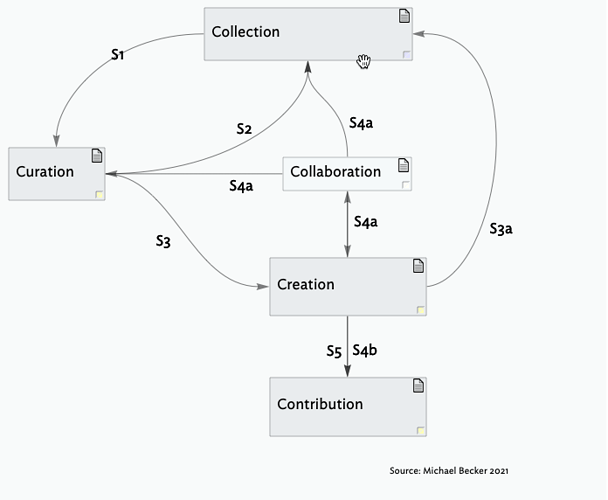@MartinBoycott-Brown I agree, multiple lenses–mental models–are needed to get a sense of the world. However, in Bloom’s definition, I do think the hierarchy holds true. Unless you are extremely lucky or gifted, to truly create you need to understand something, and go up the rungs of knowledge and execute, in order. To be clear, however, I will accept that steps can be skipped and some may experience a quantum movement where all steps happen instantaneously.
As fo the process, that is what I was referring to when I referenced by 5Cs model:
(see: An end-to-end Professional, Academic, & Personal 5Cs of Knowledge Management Workflow (Updated))Thanks for the Humberman reference, I’ll check it out.
